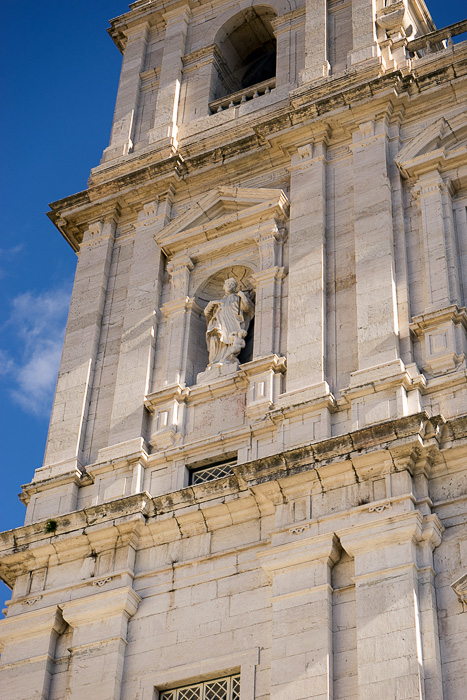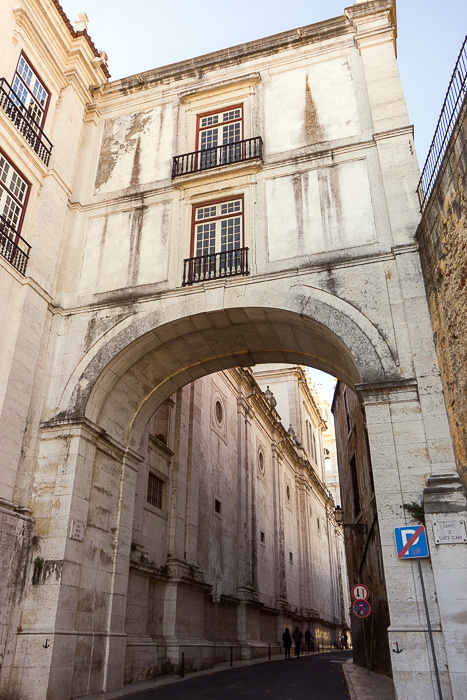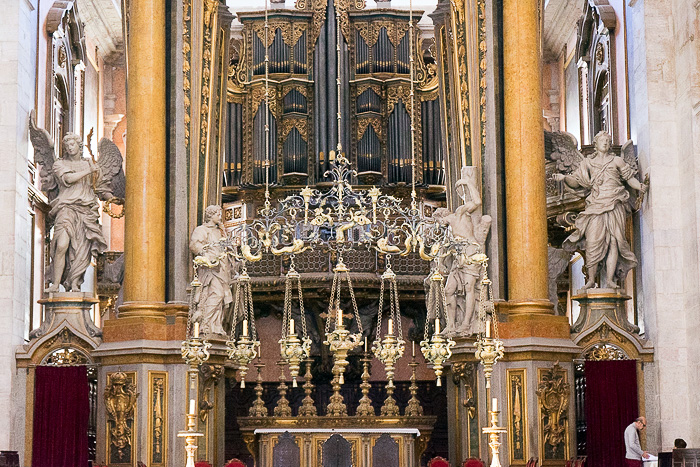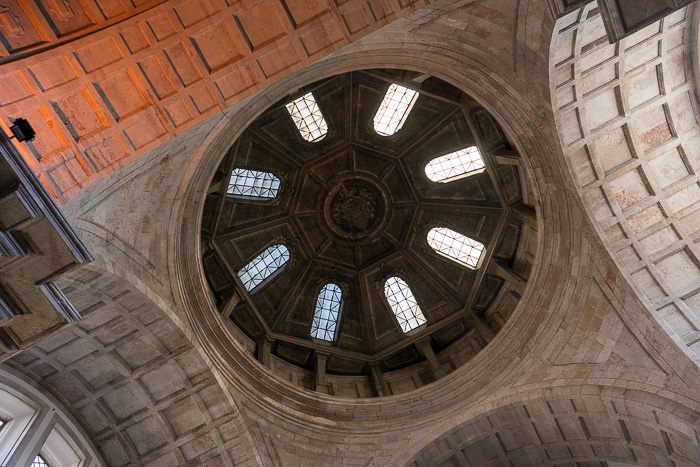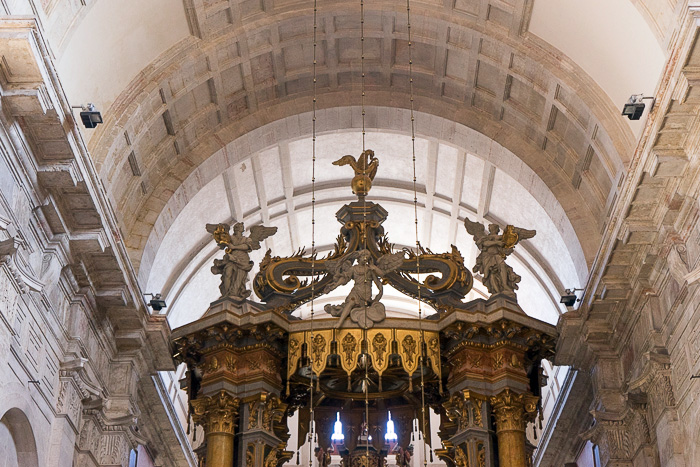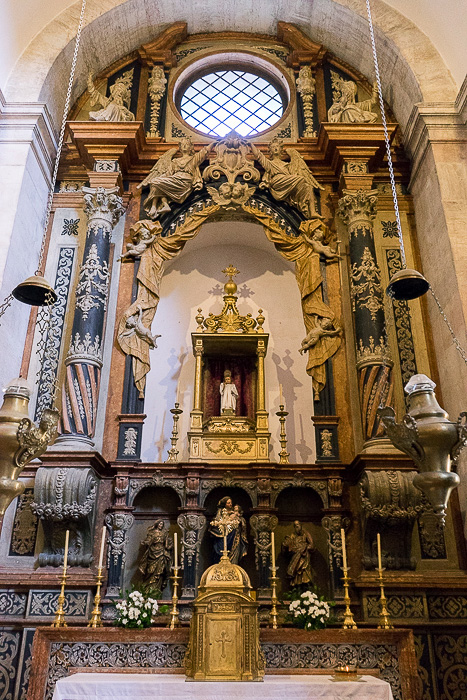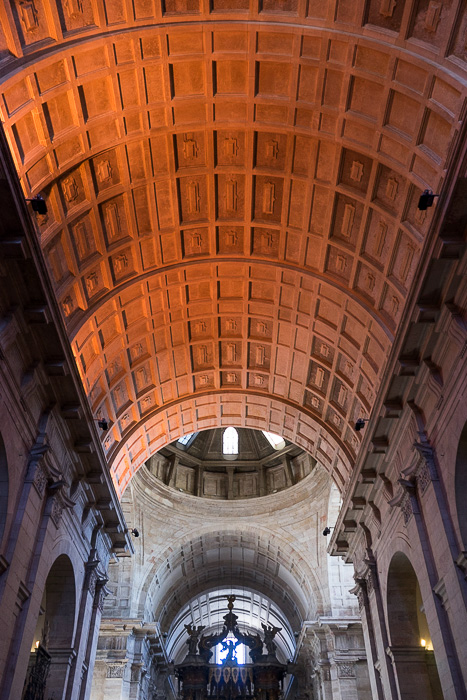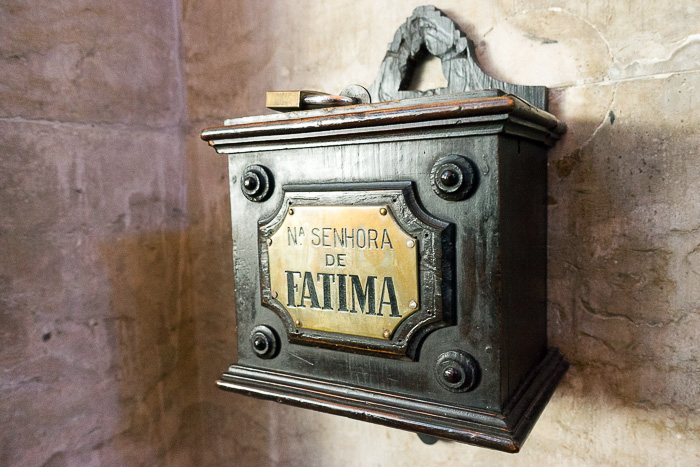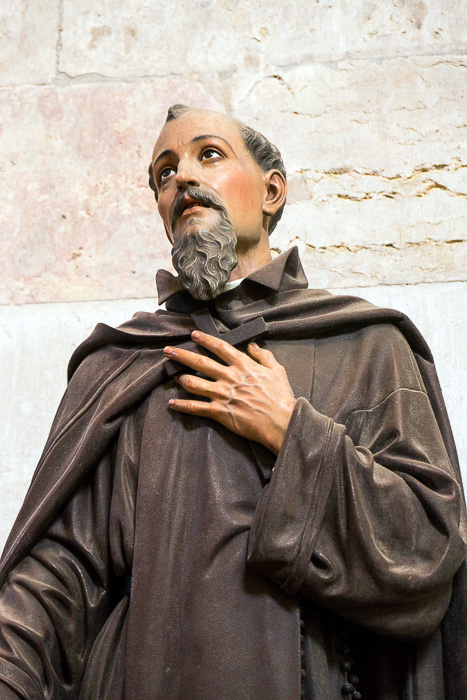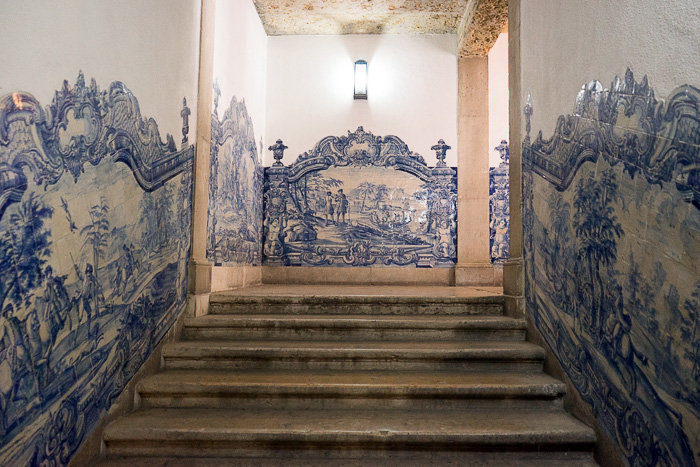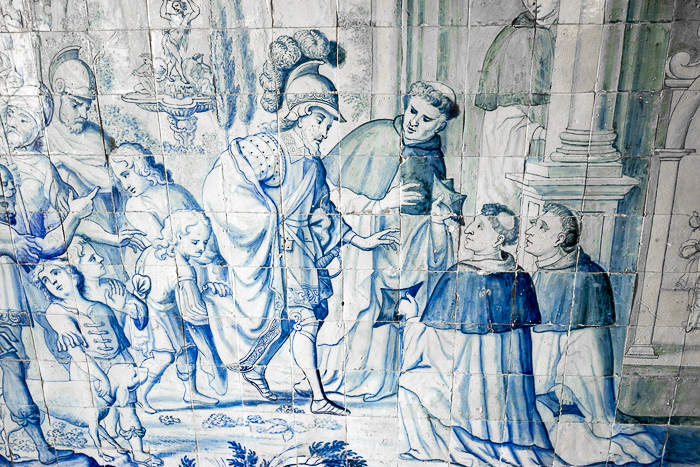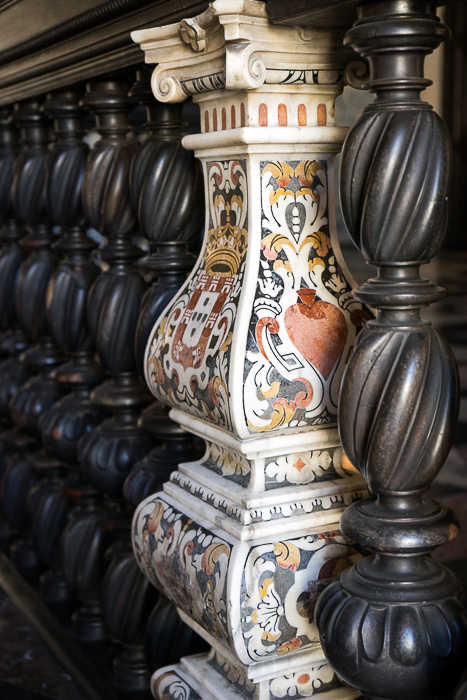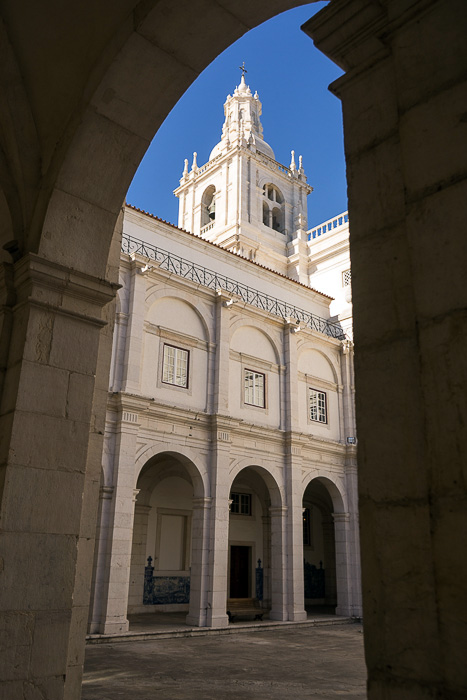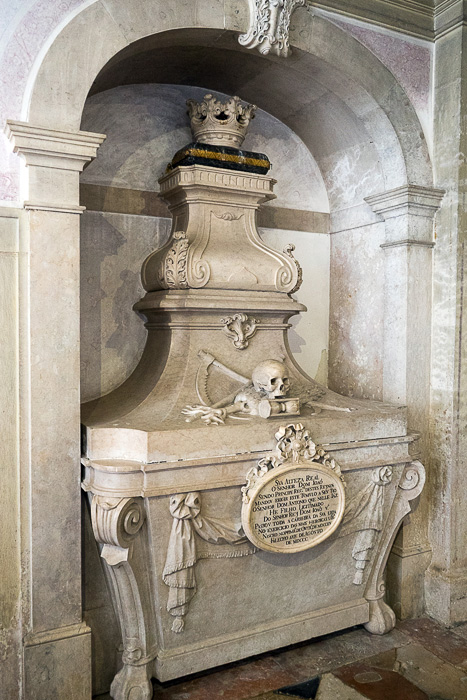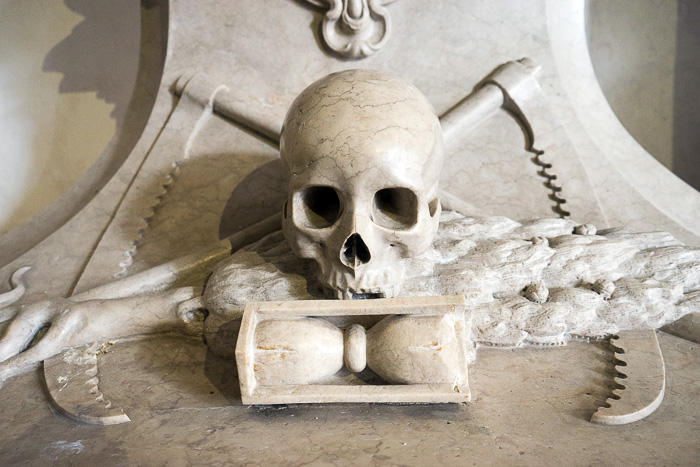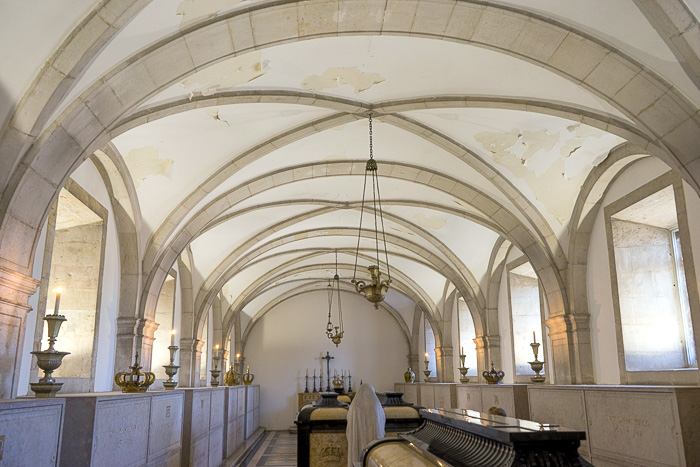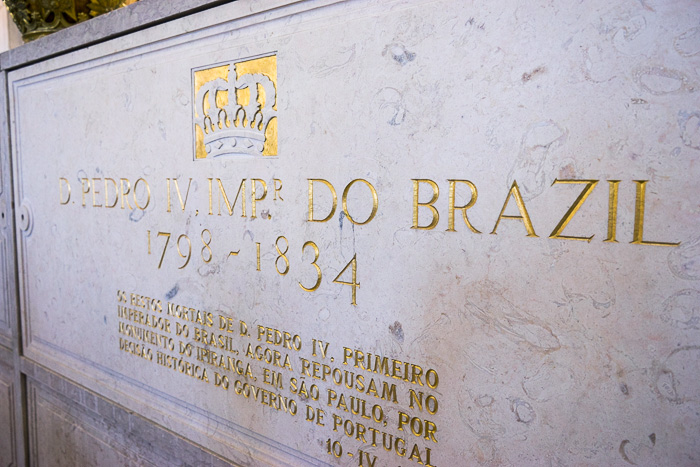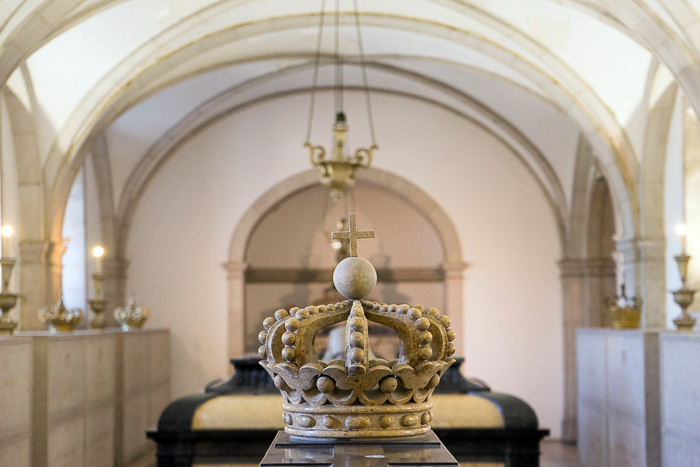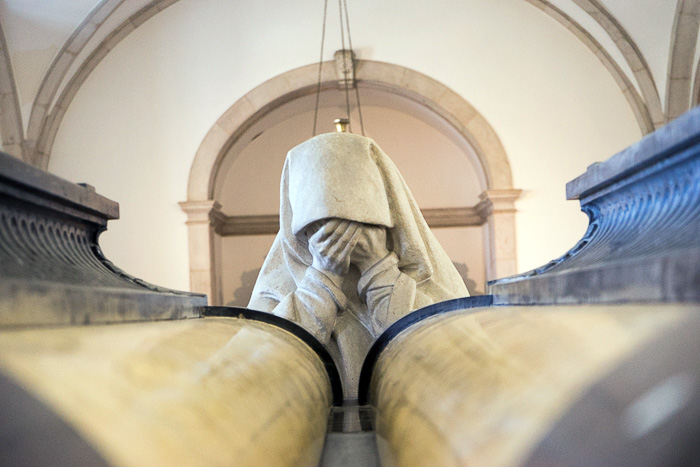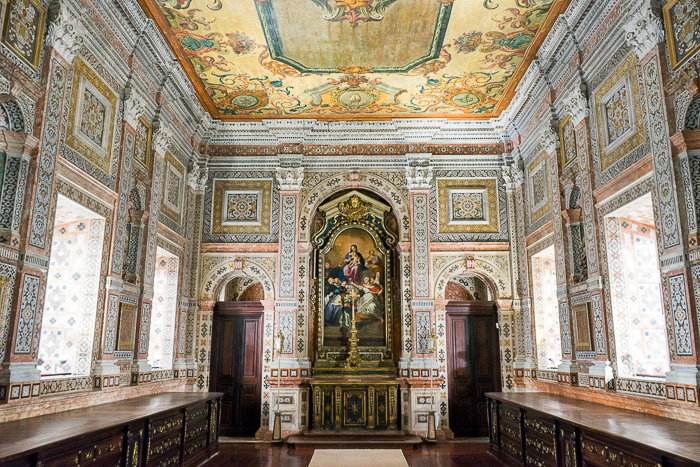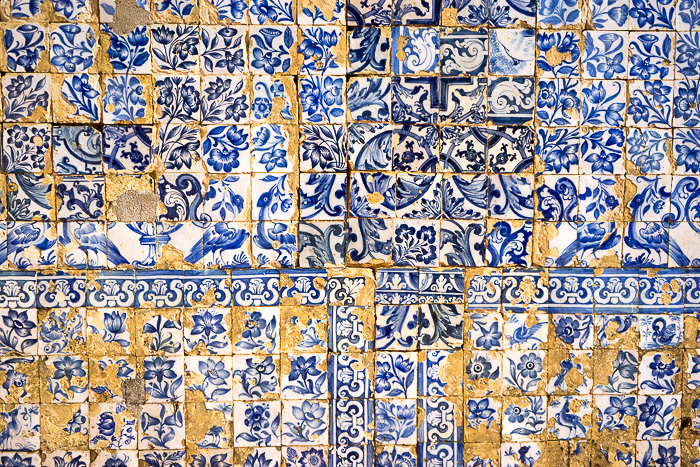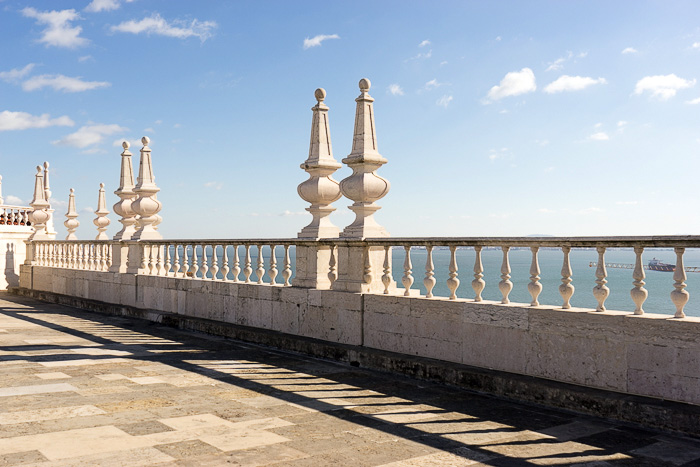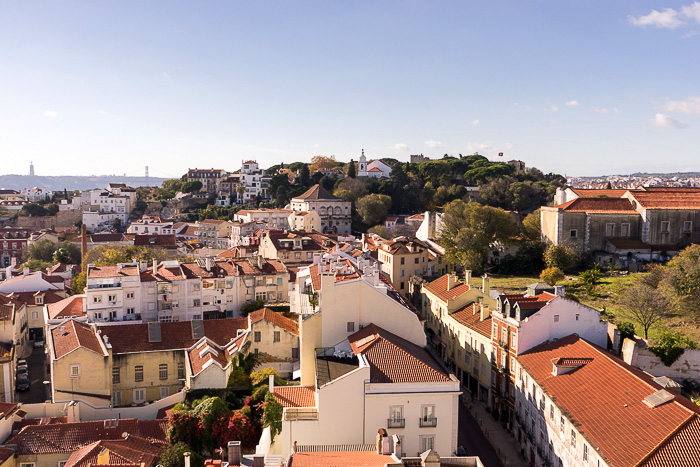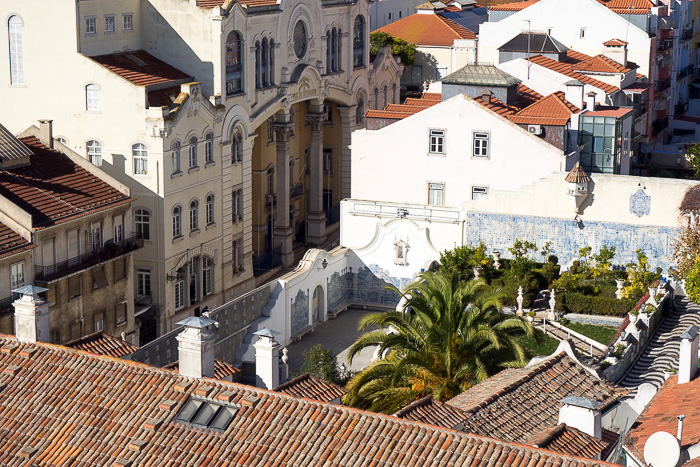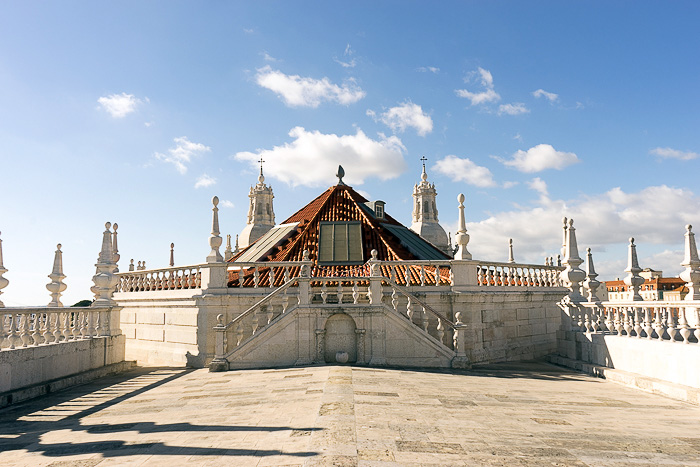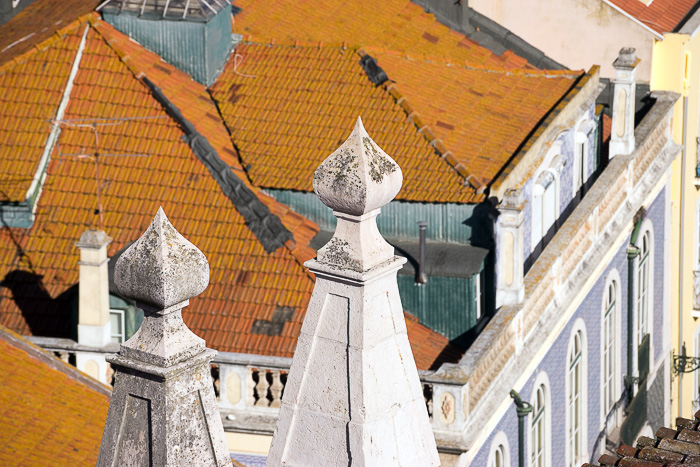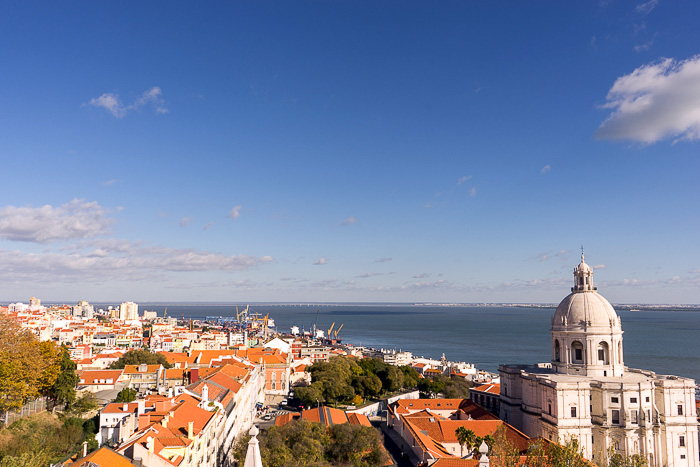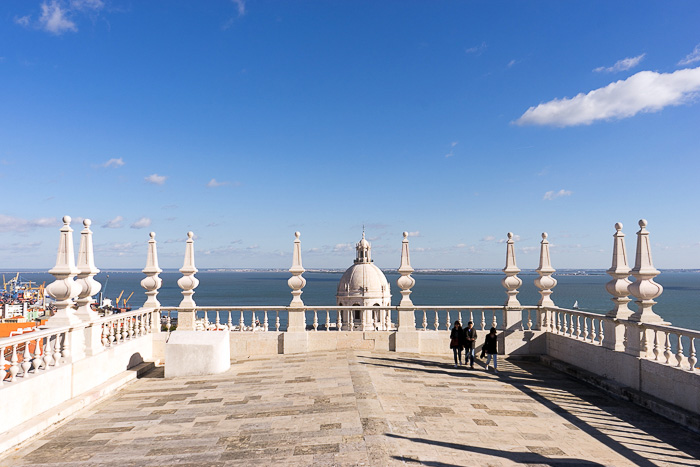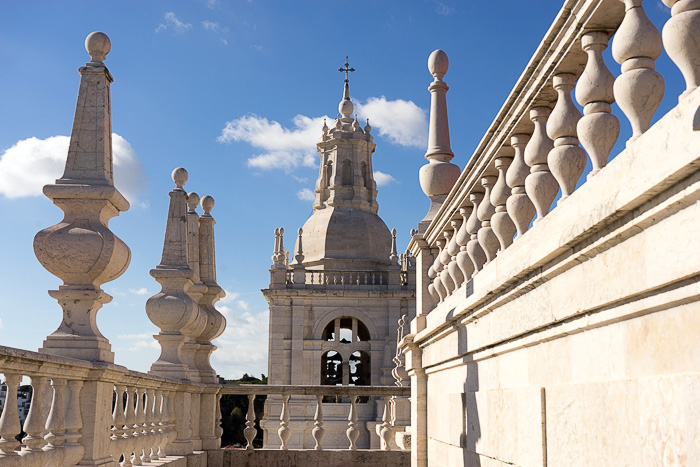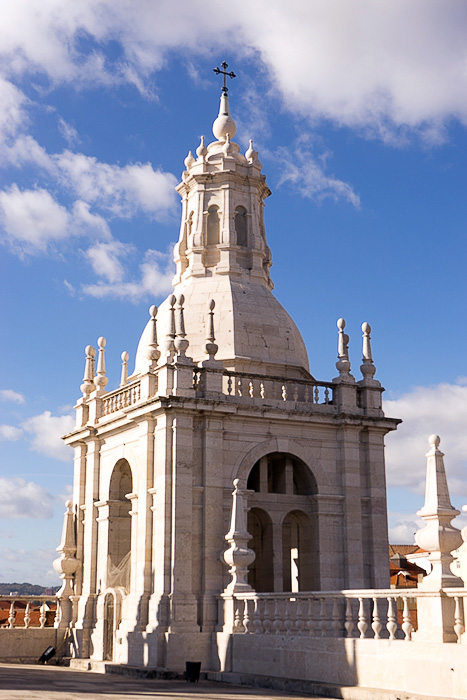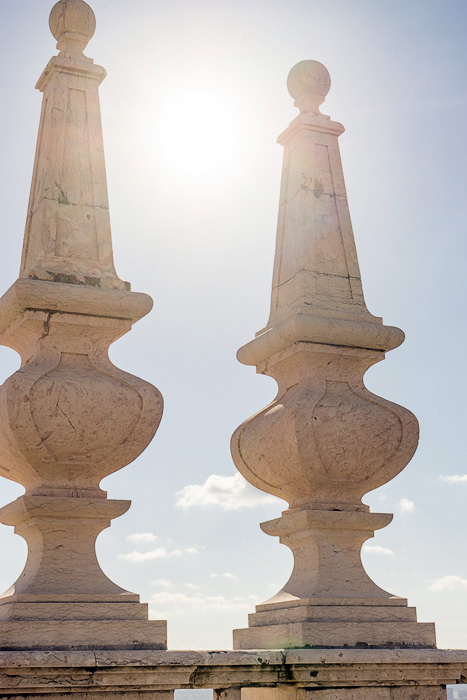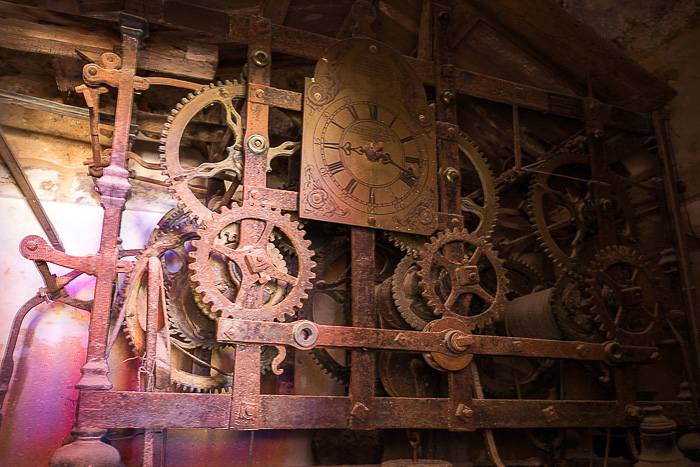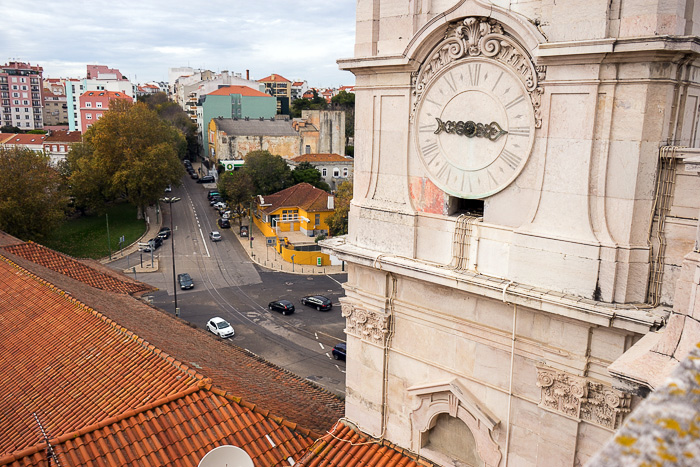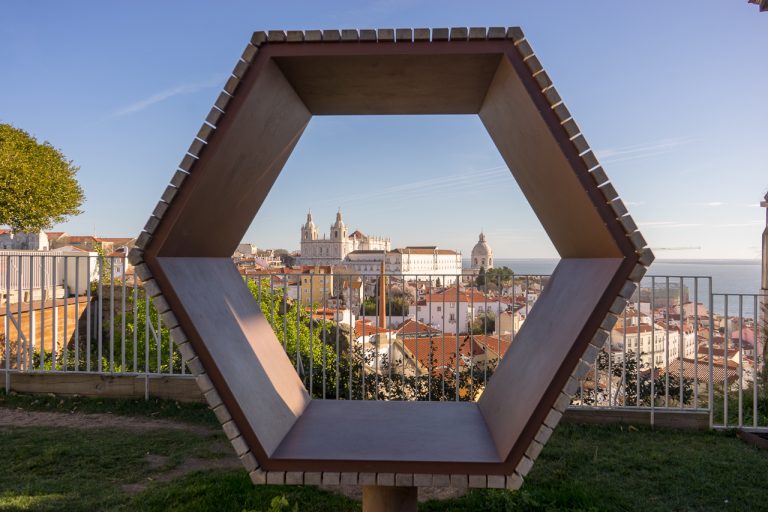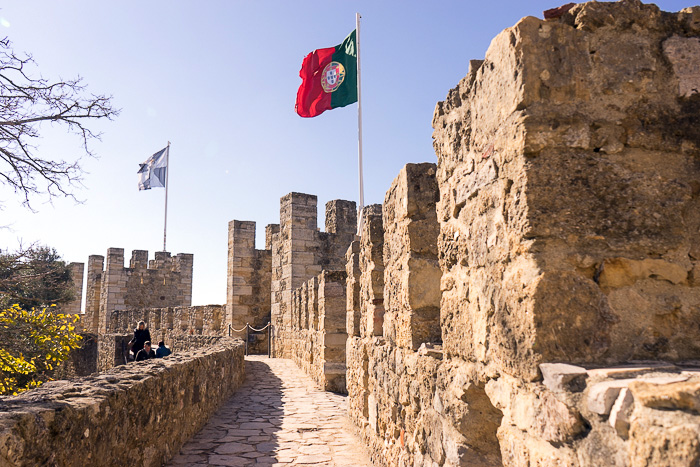São Vicente da Fora
We were surprised to learn that the patron saint of our adopted hometown of Valencia, San Vicente Martir, is also the patron saint of Lisbon. Although he’d never visited Portugal in life, his mortal remains were brought here in 1173. We visited the ancient church and monastery named in his honor, set on a hill in Alfama.
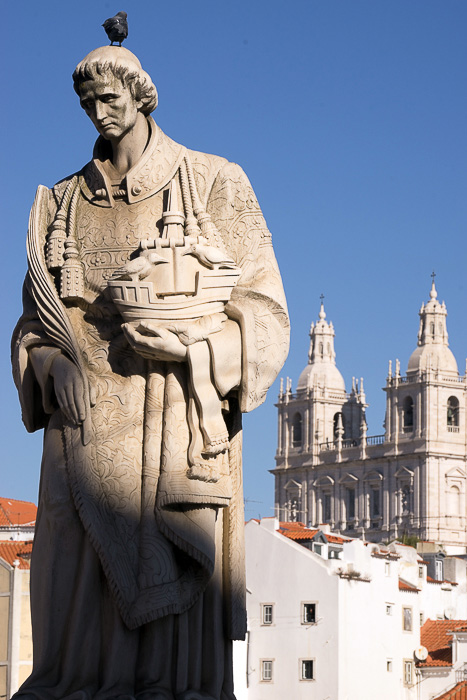
We were only visiting São Vicente on a whim, after a surprise public holiday (Restoration of Independence Day) had forced us to cancel other plans. So, already tired from a full morning of negotiating Lisbon’s hills, we only expected to peek inside the church and then be on our way. But it was hours later that we straggled out of the São Vicente da Fora, absolutely exhausted. The monastery is massive, with multiple floors, dozens of rooms, and a bell tower terrace that boasts one of the best views we’ve had yet in Lisbon.
Before paying entrance to get into the monastery, we checked out the church, which is free. Built in the late 16th century, this church has a broad, towering facade executed in the Mannerist style, with niches occupied by statues. Once inside, the enormous vaulted ceiling and dome draw your eyes straight to heaven. The layout of the church is simple, with a long hallway and various lateral chapels, but everything is beautifully done, especially the stunning pieces on each side of the altar.
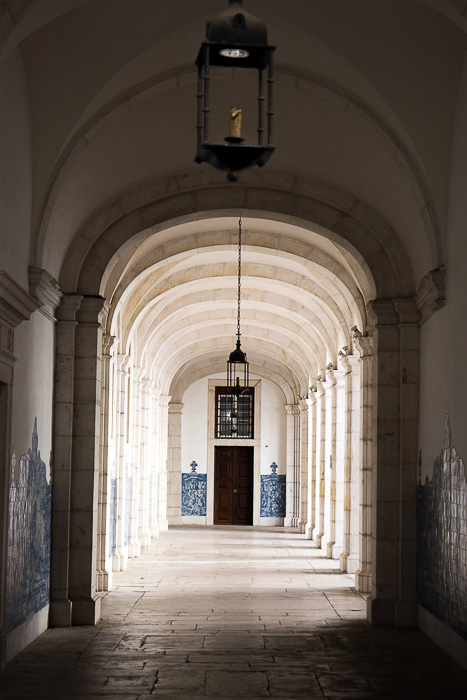
Attached to the church is the former monastery. Ordering the construction of this complex was among the first things that King Alfonso I did, after defeating the Moors in 1147. So, although there have been renovations throughout the centuries, this place has serious history. “Da Fora” refers to the fact that the monastery was built “outside” the former city walls.
Our tour started on the lower levels, where we could see the original foundations and peer into the ancient cisterns. From here, we moved up to the monastery’s main floor. Blue and white tiles, depicting into a series of Portuguese scenes, dominate the interior of the São Vicente. In the traditional entrance to the monastery, we saw tiles which recreate the the Battle for Lisbon, when Christians took the city from the Moors.
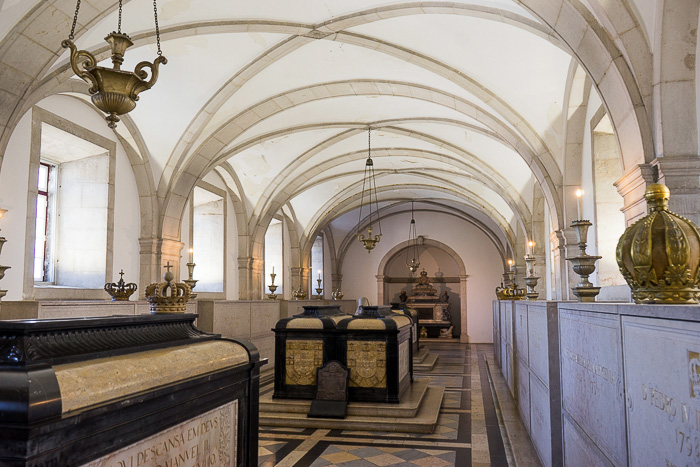
The tiles were impressive, but far from the only highlight of São Vicente. Also on the first floor, there’s a sacristy of unreal beauty, with walls of inlaid marble. And off in a corner, is the Royal Pantheon of the Braganza, the family which ruled Portugal for centuries. I was pleased to be able to recognize many of the names (my reading into Lisbon’s history was already paying dividends). There’s Carlota Joaquina, the evil queen who set the country on a path to war. And nearby, two of her sons: Pedro IV (whose statue is the centerpiece of the Praça do Rossio) and his absolutist brother Miguel, the two of whom battled during the War of the Two Brothers. The tomb of honor, though, belongs to Don João IV, known as the Restorer, under whom Portugal reached the apex of its power.
This was all fascinating, but my legs were killing me and we hadn’t even explored half of the monastery, yet. Let’s move things along!
Occupying one entire wing of the monastery is a museum dedicated to religious objects and the parish’s cardinals or bishops or something. We sped through this. We also paid scant attention to an exhibition about the fables told by some of the tiles, although I would have liked to spend more time here.
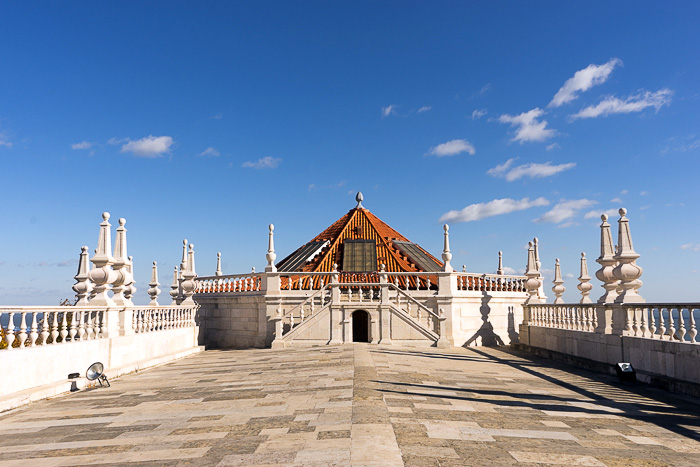
Soon, we emerged onto the monastery’s bell tower terrace, which has incredible views over Alfama, the Tagus River, and the Church of Santa Engrácia. It was a gorgeous day, and we sat down to bask in the sun. Despite the fact that we were visiting on a public holiday, and despite the monastery’s fame and prominent location, we were all alone up here.
We had no idea that the São Vicente da Fora would be so interesting, and the truth is that we had considered skipping it entirely… Lisbon has a lot of important churches, and even with 91 days in the city, we’re going to have pick and choose. But this place turned out to be a great surprise.

